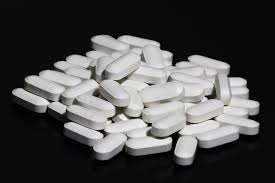Larry Law
Small kidney stones pass as tiny bits of gravel without you ever even knowing it. But larger ones leave a lasting impression that you never want to repeat! One person per 1,000 in the U.S. is hospitalized with painful stones trapped in their urinary passageways. The pain often begins in the lower back and can radiate across the abdomen and down the inside thigh. Most kidney stones are made up of calcium. Calcium phosphate and calcium oxalate account for 85 percent of all stones. Uric acid stones are seen mostly in men with gout. Large stones are treated with surgery or lithotripsy (special ultrasound machines that break the stone into smaller pieces). Elevated calcium can be related to a diet high in sugar (especially fructose), alcohol, coffee, chocolate, and meat. Rhubard, spinach, chard and parsley can contain higher levels of oxalic acid. But there are plenty of low-oxalate greens to make up for ones you have to avoid (good ones are kale, arugula, romaine, all lettuces, and most herbs except parsley). Dehydration concentrates calcium in the urine, so drink plenty of water. Avoid sodas as they contain phosphoric acid which pulls calcium out of the bones and into the kidneys. A hidden problem relating to excess calcium is low levels of magnesium within the body. It is estimated that 85% of people are low in magnesium. Calcium and magnesium counter each other. They work together like a teeter-totter in the body. When one is high, then the other is low. With all the inorganic calcium added to processed food and the altered calcium found in pasteurized milk, magnesium levels are very low. Excess calcium can be deposited in arteries causing hardening of the arteries (atherosclerosis) leading to heart attack. Heart disease is much more a problem of calcification (calcified plaque) than cholesterol. One of magnesium's jobs in to keep calcium in solution to prevent it from solidifying into crystals. Even during dehydration, if there is sufficient magnesium, calcium will stay in solution. A leading magnesium expert, Dr. Dean, states, "Magnesium is the pivotal treatment for kidney stones. If you don't have enough magnesium to help dissolve calcium, you will end up with various forms of calcification. This translates into stones, muscle spasms, fibrositis, fibromyalgia, atherosclerosis (calcification of the arteries), and breast tissue calcification, which in some cases may be mistaken for ductal carcinoma in situ (breast cancer)...Many decades ago, Dr. George Bunce clinically proved the relationship between kidney stones and magnesium deficiency. As early as 1964, Bunce reported the benefits of administering a daily 420 mg dose of magnesium oxide to patients who had a history of frequent stone formation." In my book, There's An Elephant in the Room - Exposing Hidden Truths in the Science of Health, I address the Calcium Lie and other issues related to calcification within the body.
4 Comments
juidth schultz
4/14/2020 06:59:38 am
Boron is also needed...our soils are depleted of this nutrient and sorely needed for healthy bones etc.
Reply
Larry Law
4/15/2020 04:47:21 pm
Excellent point Judith. There are many raw materials required by the body to make healthy bones. The most important ones to supplement are those that happen to be missing in your body. This is from a researcher published in PubMed: "The process of bone formation requires an adequate and constant supply of nutrients, such as calcium, protein, magnesium, phosphorus, vitamin D, potassium, and fluoride. However, there are several other vitamins and minerals needed for metabolic processes related to bone, including manganese, copper, boron, iron, zinc, vitamin A, vitamin K, vitamin C, and the B vitamins. Although the recommended levels of nutrients traditionally related to bone were aimed to promote bone mass and strength, the recommended levels of the other nutrients that also influence bone were set on different parameters, and may not be optimal for bone health"
Reply
sherelle
2/24/2021 08:28:39 pm
Larry, in your brochure on vitamins you tell the difference between natural and synthetic. One way to tell synthetic is by the ending 3 letters, ate & ide. In the above text it says to take magnesium as magnesium oxide? what is oxide.
Reply
Larry Law
2/25/2021 03:54:18 pm
Hi Sherelle,
Reply
Leave a Reply. |
BlogArchives
July 2024
Categories
All
|
© Angie's Option GRM. All rights reserved.







 RSS Feed
RSS Feed

